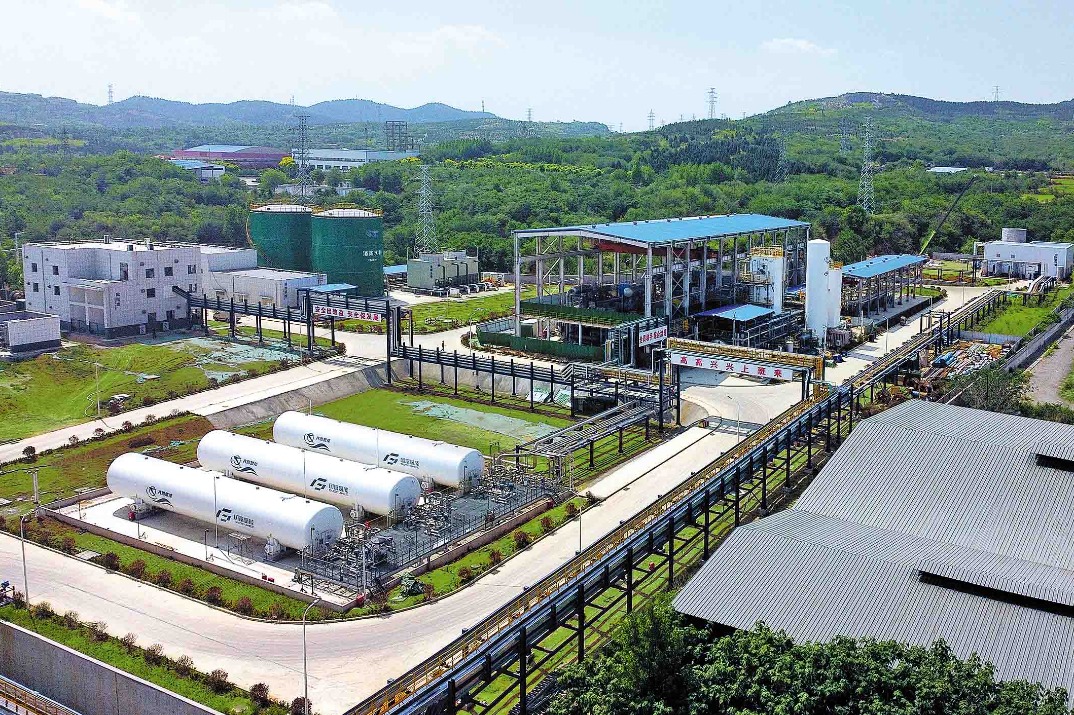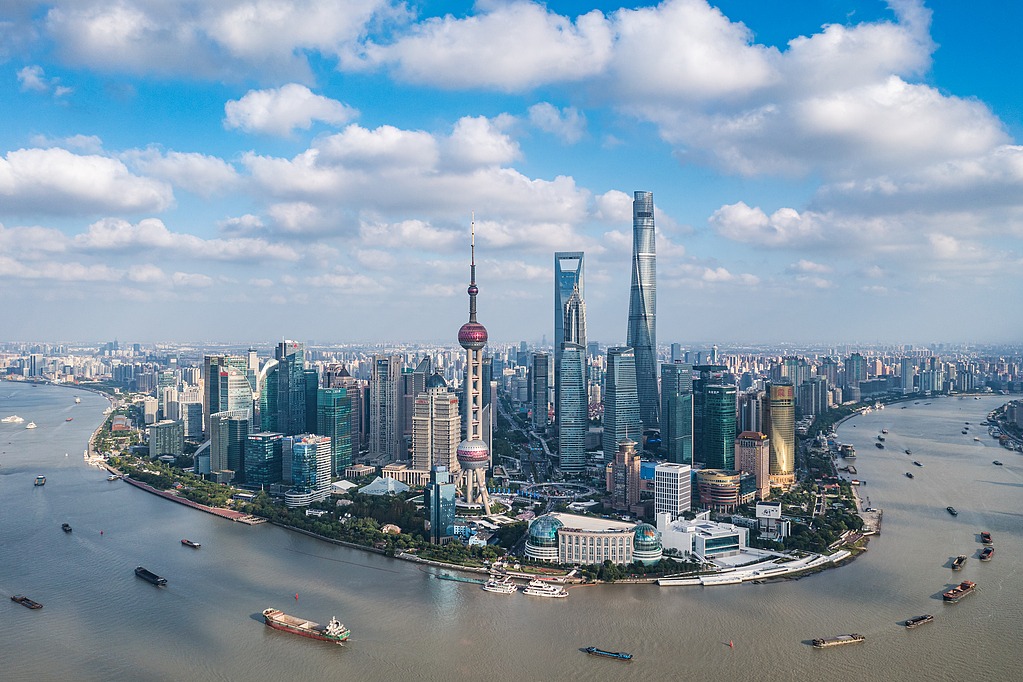'Ambiguous warning', decisive action to stop the virus


In addition to the human suffering due to lost lives and illness, the coronavirus is disrupting the Chinese economy. In the last few weeks, daily life has been disrupted, many businesses are closed and many people have lost income.
In particular, many small businesses, especially in service sectors, will lose a big chunk of their revenue and possibly go bankrupt. But, experience from past epidemics shows that the nationwide aggregate effects in the long and short terms are likely to be limited.
The Chinese government is taking historically unprecedented steps to limit the spread of the virus and, in my view, has done so astonishingly rapidly. Responsible governments and people around the world should be supporting these efforts.
Experts emphasized that China has the macroeconomic policy tools needed to manage the situation. Kristalina Georgieva, managing director and chairman of the Executive Board of the International Monetary Fund, said on Feb 3: "We support China's efforts to respond, including recent fiscal, monetary, and financial actions. We are confident that China's economy remains resilient."
And, the World Bank issued a statement supporting China's monetary policy. "The Chinese authorities have policy space to respond and have announced a sizeable injection of liquidity, which should help mitigate the costs to economic growth."
For all Chinese and for foreigners living in China, the last few weeks have been frightening, but the supply of daily necessities has not been interrupted for most people. The government's ability to keep supplies flowing into quarantined Wuhan has been amazing. The soldiers and transport workers who make this possible, at the risk of their own lives, should be highly praised. I'm especially moved to see many healthcare workers from all around China heroically going to Wuhan.
Although people are scared because of the possibility of evolution and spread of the coronavirus, it is important to put it into perspective.
For example, 80,000 people died from the H1N1 flu in the 2018-2019 winter in the United States alone. So far, flu has killed 10,000 this winter in the US. The US Center for Disease Control and Prevention expects between 12,000 and 61,000 flu deaths each year in the US. No one argues that these deaths are caused by US government inaction.
A 2017 study published in The Lancet estimated that between 291,000 and 646,000 people worldwide die annually from the flu. And, the World Health Organization estimates that about 1.4 million people die each year in traffic worldwide, with roughly half of those deaths caused by drunk drivers. The coronavirus is very serious, but even the worst-case predictions show much less death and injury than these recurring dangers.
Since we don't yet know how long the coronavirus epidemic will last or how widespread it will be, estimates of the impact vary widely. On the pessimistic side, Ren Zeping, chief economist and director of the Evergrande Think Tank, expects the economy to slow to 5.4 percent growth in 2020. His worst-case scenario calculates that growth could slow to 5 percent, as reported by Caixin, an independent Chinese financial publication.
On the optimistic side, Wei Shangjin, professor at Columbia Business School and former chief economist of the Asian Development Bank, told Caixin that he estimates a decline of 0.1 percentage point of growth.
Even in the worst case, these aggregate numbers show relatively healthy growth for the overall Chinese economy in 2020.
However, microeconomic impacts in some sectors could be more severe, especially since China is a key participant in the global economy. IMF spokesman Gerry Rice said: "If global supply chains were systematically affected or global financial markets were significantly impacted by increasing uncertainty, then obviously the impact would be greater."
The slowdown will affect not only China. For example, Goldman Sachs estimates that the coronavirus will reduce the US annualized growth rate by 0.4 percentage point in the first quarter.
Within China, small businesses will be the hardest hit. Ren Zeping of Evergrande estimates that the restaurant, tourism, and movie industries lost 1 trillion yuan ($143.3 billion) of revenue during the first seven days of the Spring Festival holiday this year. Many of these businesses have very small profit margins and difficulty accessing capital. Plus, they have to keep paying rent and workers even if they are closed. Many of them could go out of business.
To help these businesses, the China Banking and Insurance Regulatory Commission said that banks and insurers should allow them to delay repaying mortgage loans and credit cards. The People's Bank of China, the central bank, announced that abundant liquidity will be made available.
The theory of decision-making provides insights into the dilemmas that officials face when confronted with a potentially catastrophic but highly uncertain event. Historian and nuclear strategist Roberta Wohlstetter's 1962 book, Pearl Harbor: Warning and Decision, about the Dec 7, 1941, Japanese surprise attack on the US Pacific fleet, is fundamental to this decision analysis.
Of course, American planners were aware that the US fleet was very vulnerable when docked, but they also knew that the ships needed lots of maintenance time in port in order to function. Putting the fleet out to sea would both lower the readiness of the ships and would be very expensive. So, the US Navy could not leave Pearl Harbor every time there was a radar blip or other warning of a possible Japanese attack.
Wohlstetter introduced the concept of the "cost of responding to ambiguous warning". She found that there were, of course, lots of warning signals that a Japanese attack might be underway on the morning of Dec 7. But, there had been lots of warning signals on many days in the preceding years. It simply cost too much to respond to each of these ambiguous warnings that something might happen.
After the attack, it was possible to go back and find warning signs that might have given leaders the information they needed to save the ships. Leaders were blamed for not spotting or acting on this information. But, Wohlstetter showed that they acted responsibly given the real warning they had and the cost of acting too rashly. They would have been severely criticized if they had repeatedly fled the harbor when no attack actually happened.
Obviously, if any individuals are proven to have acted corruptly or in dereliction of duty, they should be punished in accordance with the law.
By the way, Wohlstetter's work is a great classic. It is one of the few books I re-read regularly. Anyone interested in decision-making should read it.
Her analysis applies to the response to the Wuhan virus. Many potentially threatening health threats show up each year-most of which turn out not to be too serious. Policymakers have to respond to these ambiguous warnings in a reasonable way given the information they have at the time.
Quarantining a whole large city is a step that has not been taken elsewhere in modern history.
Look at other recent epidemics. The HIV virus that causes AIDS spread rapidly in the US and then around the world. Tragically, it has caused mass deaths in sub-Saharan Africa. Yet it might have been stopped by early quarantine of a small number of people.
Similarly, the epidemic of people taking opioids in the US soared out of control in the last decade, but the US government did not take effective action to prevent it-largely because doing so would have threatened the profits of a few pharmaceutical companies.
Disgustingly, some pundits are trying to score cheap political points on the basis of the coronavirus. The kindest interpretation is that they are ignorant of history and of decision-making theory. More likely, they are simply dishonest.
In contrast, Tedros Ghebreyesus, director-general of the WHO, said on Jan 30: "Over the past few weeks, we have witnessed the emergence of a previously unknown pathogen, which has escalated into an unprecedented outbreak, and which has been met by an unprecedented response.
"The speed with which China detected the outbreak, isolated the virus, sequenced the genome and shared it with WHO and the world are very impressive, and beyond words. So is China's commitment to transparency and to supporting other countries. In many ways, China is actually setting a new standard for outbreak response. It's not an exaggeration."
The rapid and decisive action taken by Chinese government officials in response to ambiguous information about the new coronavirus is frankly astonishing. The whole world should be praying that these policies are effective and that few additional lives are lost.




































